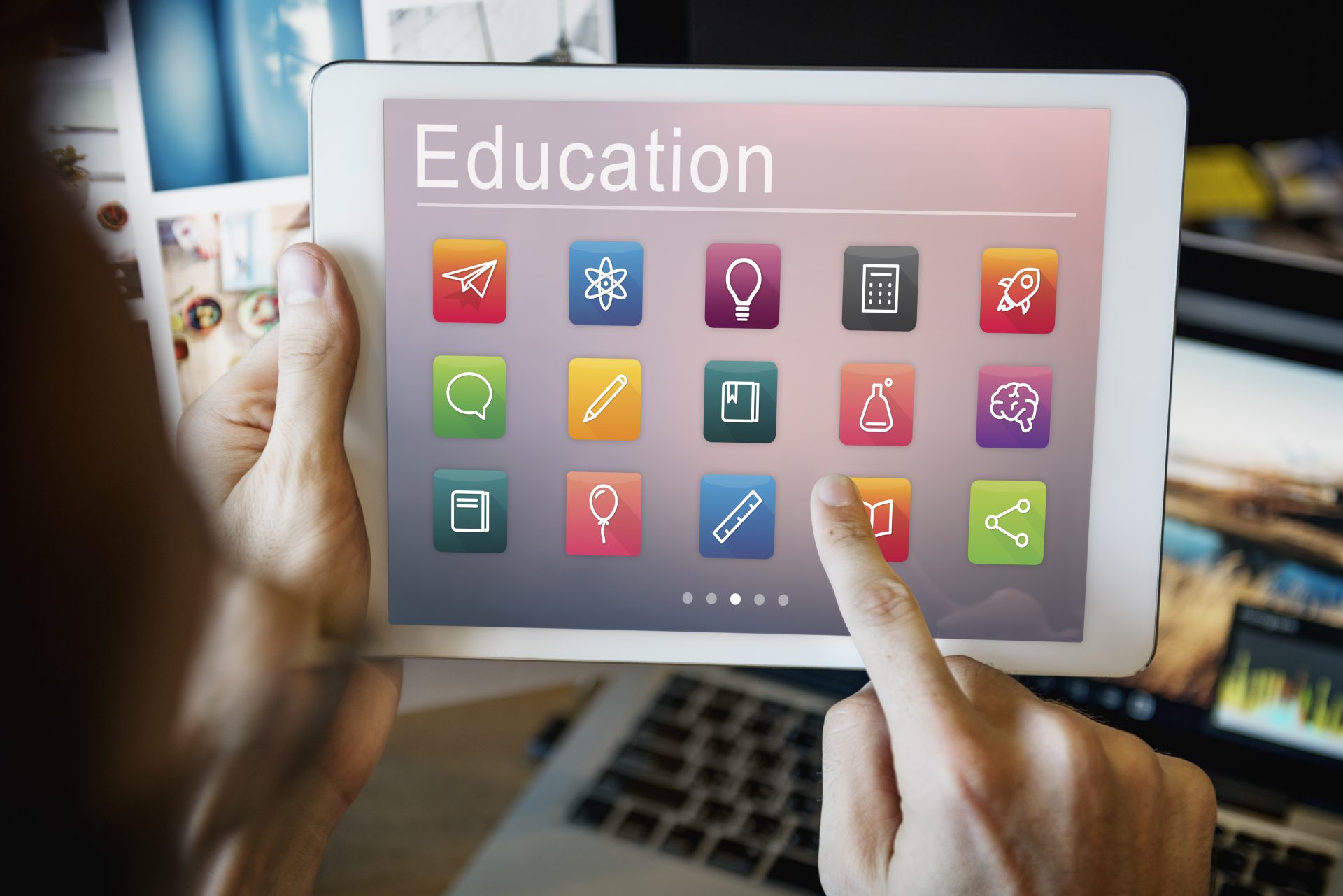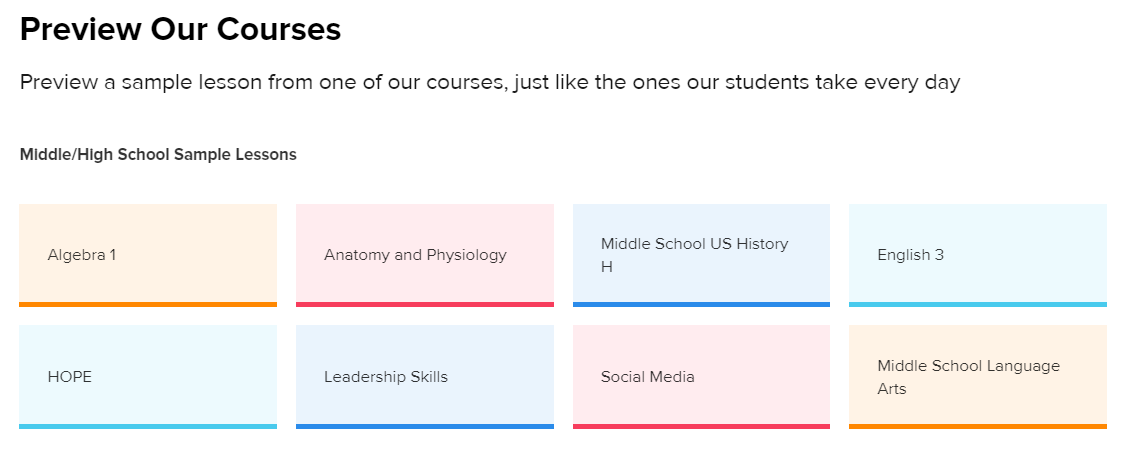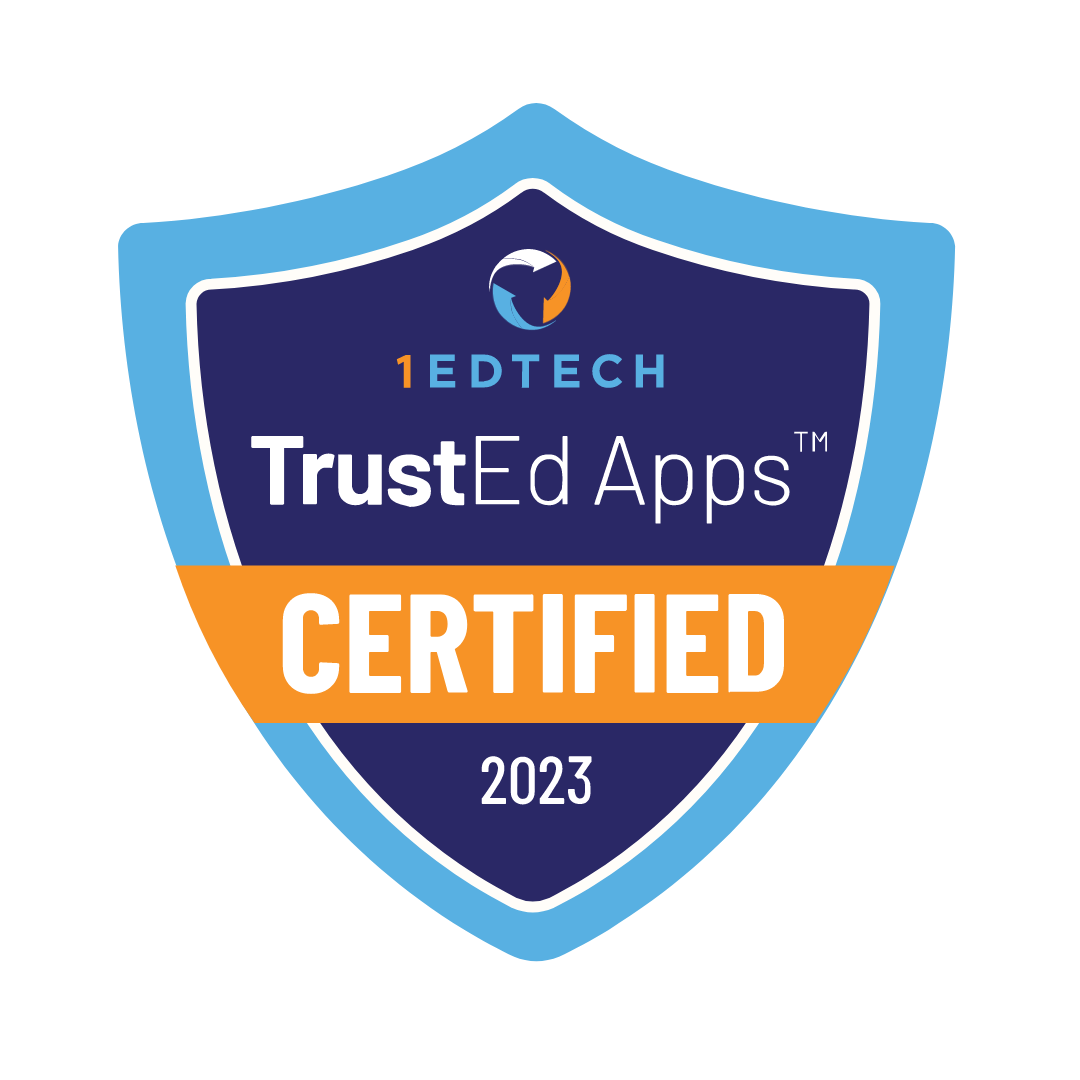Contents
- 1 Challenges of Virtual Learning
- 2 Embracing Technology in Virtual Education
- 3 Professional Development for Educators
- 4 Potential Benefits and Downsides of Virtual Learning
- 5 Utilizing Platforms for Virtual Education
- 6 Learning Management Systems (LMS)
- 7 Video Conferencing Tools
- 8 Innovations Propel Virtual Education Forward
- 9 Adaptive Learning Platforms
What is virtual learning? Virtual learning is a type of education where students study an online-based curriculum taught by educators that use either video or audio. It takes place either asynchronously (self-paced) or synchronously (real-time).
Virtual learning is a new way of teaching and learning with its own challenges. The ability to learn from anywhere makes education more accessible but contains technological challenges that limit this advantage: no access to high-speed internet or not having ownership of the right devices. The appearing challenges are not insurmountable because careful planning and resource allocation can conquer them as well.
Virtual learning in schools provides flexibility, personalized pacing, and access to a wide range of educational resources. Schools can effectively implement virtual learning by providing online training for teachers, offering robust digital curricula, and creating a supportive online learning environment for students.
See for yourself what Legacy Online School offers for its programs by checking out our curriculum! You can even preview our courses that we want to show you.
Challenges of Virtual Learning
The main challenges of virtual learning in 2024 remain three points: internet access, hardware, and software. Limited access to high speed internet and related devices can significantly hinder learning by having interruptions mid-class sessions. Interruptions during class hinders a student’s ability to perceive information or even become disconnected from class due to a poor internet connection. Both students and instructors find these hindrances frustrating.
Unequal access to technology grows rapidly and virtual learning continues to play a critical role in education. Unequal access touches students from low-income families, who have difficulty accessing reliable internet services and devices to study. Lacking proficient technology to study puts students at a disadvantage compared to their peers who are more well-off. Technological disadvantages are essential for all educators and policymakers to address to help ensure all students have an equal opportunity to succeed.
A major challenge of virtual learning remains the impact on social interactions and engagement. Students spend long hours in front of screens, which causes them to experience isolation and reduces interactions with peers. Lack of face-to-face interaction can affect students’ overall learning experience and social development. Students, who have no physical presence of their classmates and teachers, may miss crucial opportunities for collaboration, discussion, and development of interpersonal skills.
It is important to consider the implications for younger students who are still developing their social skills. Kids who develop their social skills require talking to their peers not only for learning but also to build relationships and understand social cues. The lack of communication during virtual learning can be a problem of holistic development.
For example, a high school student who eagerly participates in group discussions and sporting events suddenly feels isolated. The feeling of isolation comes from being cut off from their friends and stuck with virtual socializing, which negatively impacts a student’s mental health and a sense of belonging in the school community. Challenges such as isolation posed by technological barriers and reduced social interaction highlight significant areas of concern.
Schools continue to navigate the landscape of virtual learning. Solving challenges becomes the key to ensuring virtual education stays effective and inclusive for all students.
Embracing Technology in Virtual Education
The digital world of 2024 is fast-paced. Usage of technology in virtual education becomes more important. Improving the overall online educational experience by integrating the latest tools and resources becomes one of the main ways to accomplish said goal. Improvement of virtual education lies in interactive tools since they can dramatically change audience engagement and learning outcomes.
Integration of Interactive Tools
Interactive tools such as virtual whiteboards, education applications, and video conferencing make up a key component in online schools by making it more interactive and engaging for students.
| INTERACTIVE TOOL | WHAT DOES IT OFFER? |
| Virtual whiteboards (Microsoft Whiteboard, Miro, etc.) |
|
| Educational apps (Google Classroom, Khan Academy, Quizlet, etc.) |
|
| Video conferencing platforms (Zoom, Google Meet, etc.) |
|
Virtual whiteboards, educational apps, and video conferencing platforms allow teachers to create a virtual classroom not so different from the traditional schools. Whiteboards assist with drawing and labeling. Educational apps help with making scientific concepts engaging. Video conferencing platforms support communication among the students.

Professional Development for Educators
Professional educator’s development is essential to effectively unlock the potential behind digital tools. Teachers must receive appropriate training. The training will help teachers use digital tools, platforms, and adjust their planning for virtual teaching. Training will help them make dynamic virtual classrooms, promote active student participation, and experiential learning.
Professional development programs equip educators with the necessary skills. They are essential for integrating new technologies into teaching methodologies to accommodate different learning styles. Teachers can find new ways to teach well by studying the latest trends in EdTech. Educators who are on top with their EdTech knowledge increase student engagement in the virtual environment.
For example, a teacher of English literature attended a professional development course on the use of immersive storytelling apps. He wanted to bring classic novels to life for his students. The teacher gains expertise in creating an interactive reading experience through his training. This training experience captures the imagination of the students. The result of teacher’s training promotes a better understanding and appreciation of literature to his students.
Cherie Ichinose, a fellow educator, noted how the challenges of online teaching led to her becoming a better teacher overall.
She mentioned below.
“I spent eight wonderful years working as an online teacher, primarily through one of K12’s partner schools, California Virtual Academy, working closely with teams of dedicated teachers, educators, and school leaders who shared a passion for meeting the education needs of every child. […] Teaching at an online school does not require any less professionalism, training, or education than are required at a traditional school. In fact, I would argue there is an increased level of diligence, compassion, and understanding required when teaching online.”
– Cherie Ichinose on Online Education from EducationWeek

Teachers confidently adapt to virtual schooling by investing in ongoing professional development and using digital tools. They adapt to the changing world of virtual education and empower students to enrich their learning experience.
Interactive tools are easy to integrate into a homeschooling environment. Multimedia tools provide a solid foundation for nurturing the potential of technology in virtual education. Integration of tools provide educators with skills to navigate and excel in modern education. This forward-looking approach increases student engagement.
It is now time to dive into the benefits and downsides of virtual learning.
Potential Benefits and Downsides of Virtual Learning
Virtual learning offers many benefits for students, teachers, and families. One of the most significant is flexibility. Students can access lessons anytime and anywhere thanks to the flexibility of virtual education. This allows for a personalized pace of learning that suits each student’s needs. Customization can be helpful for students who have other responsibilities outside of school: a part-time job or family commitments.
Virtual learning opens up a huge range of diverse learning resources. Students can explore interactive simulations, videos, and online libraries. These tools may not be available in traditional classrooms. Exposure to learning materials improves students’ understanding of complex concepts and stirs their curiosity. Virtual learning platforms can accommodate different learning styles for each student. Students will have the opportunity to engage with the material in a way that suits them.
Benefits
| BENEFIT | WHY A BENEFIT? |
| Flexibility | 24/7 access to lessons from any part of the world |
| Personalized learning pace | Matching a student’s unique need |
| Diverse learning resources | Interactive simulations, videos, and online libraries |
| Appropriate for different learning styles | Ensuring engagement for all learners |
| Safety | Virtual learning environments serve as a safe space for students and avoidance of bullying |
Legacy Online School also provides you with benefits. Check them out in case you want to dive deeper into what you can expect. See our teachers and our programs for yourself right now!
Downsides
| DOWNSIDE | WHY A DOWNSIDE? |
| Limited social interaction | Virtual learning experience limits social interactions outside of classroom discussions |
| Isolation | Lack of physical presence and sense of loneliness |
| Distractions | Home environment with a loud family or pets may become distraction and take a student’s mind off a class |
Utilizing Platforms for Virtual Education
Using the right platforms in virtual education is crucial. It is essential for creating a smooth and rich learning experience. There are different tools that serve different purposes from managing classroom materials to real-time interaction between instructors and students.
Here are a few of the major platforms that play a key role in virtual education today.
- Management Systems
- Video Conferencing Tools
- Virtual Reality and Augmented Reality
- Adaptive Learning Platforms.
Learning Management Systems (LMS)
Learning management systems (LMS) include Google Classroom, Canvas, and Schoology. They provide a centralized hub for organizing learning materials. These management systems are used to communicate with students and assign assignments. Learning Management Systems act as digital classrooms. Students can turn in assignments, take tests, and join discussions by using these tools.
Learning Management Systems simplify the learning process. They create a structured environment for both instructors and students. Instructors can upload lecture notes, videos, and reading materials. Educators can also track student progress and performance. Students can easily access course materials, participate in collaborative activities, and communicate with their peers or faculty.
Using a Learning Management System not only promotes organization and efficiency, but also allows instructors to accommodate different learning styles. This is all thanks to the various multimedia materials and interactive features within LMS tools.

Video Conferencing Tools
Video conferencing tools such as Zoom, Microsoft Teams, and Google Meet play a pivotal role in virtual education by enabling real-time interaction between teachers and students. These apps create live engagement in the online classroom. They let educators run synchronous lessons, host virtual office hours, and lead group discussions.
Educators can deliver dynamic lectures, lead interactive Q&A sessions, and provide personalized support to students through video conferencing tools. Video conferencing tools foster connection in the virtual world. They do this by enabling face-to-face communication virtually.
For instance, students can ask questions in real-time during a virtual lecture or participate in group projects through breakout rooms. This engagement helps bridge the gap between physical and virtual classrooms by fostering collaboration and active participation among students.
We’ve covered the key virtual education platforms and their impact on learning.
Now let’s look at the innovations driving virtual education forward.
Innovations Propel Virtual Education Forward
Virtual Reality (VR) and Augmented Reality (AR) have fundamentally changed how students interact with educational content. Students can enter the human body to explore its complex systems to see historical events unfold in front of them. These technologies offer immersive learning experiences and give kids the chance to engage with complex concepts in new ways.
VR and AR bring a whole new dimension to education.
With VR headsets, students can “visit” ancient civilizations engineering and biology to history and art. They can experience outer space or delve into the depths of the ocean. All of this is possible without leaving the classroom.
Similarly, Augmented Reality overlays digital information onto the real world. The overlay allows students to examine 3D models or historical artifacts as if they were right in front of them. VR and AR remove physical barriers, expand what can be learned and experienced in a virtual setting.
For example, in a biology class, instead of just studying a diagram of a cell on paper, students can put on VR goggles. They can then travel inside a cell to see its structures up close by wearing said VR set. In history classes, AR can bring historical artifacts to life right in front of the students’ eyes, creating a rich and interactive learning experience.
It’s not just about immersive experiences. Adaptive learning platforms are also revolutionizing virtual education.
Adaptive Learning Platforms
Artificial Intelligence (AI) reshapes online education through adaptive learning platforms. Artificial Intelligence customizes educational content for each student based on their performance and preferences. Each student gets personalized instructions. Each instruction is tailored to their unique pace and style. This system enhances virtual education by focusing on each student’s strengths and fixing their weaknesses.
Online education platforms using AI meet students where they are. They provide additional support in areas where students struggle while challenging them in areas where they excel. This level of customization creates a highly engaging and effective learning environment.
Adaptive learning platforms continuously analyze data and make real-time adjustments. This ensures that students always get content relevant to their current learning stage. The educational platforms can identify patterns in the way each student learns and adapt accordingly thanks to Artificial Intelligence.
Liz Kolb, an online educator, agrees that using adaptive learning platforms assists students greatly with their learning capabilities. They do it by using a specialized approach where students can apply their knowledge on real life events.
Liz states in the ASCD blog below.
“I ask the students to select one problem from their adaptive software that they solved and show how this same situation or equation could be used in their everyday lives. For example, solving fractions could be used in cooking or baking.”
– Liz Kolb
For example, a math program identifies when a student struggles with division but excels at multiplication. The program then adjusts the lesson plan to reinforce division and to offer extra challenges in multiplication. These challenges are not too hard for the student and improve their learning capabilities.
The merging of VR/AR tech and the power of AI-driven adaptive learning brought a new era for virtual education. It brought improved engagement, personalized teaching, and groundbreaking experiences for students worldwide.
Incorporating such innovative tools significantly transformed the landscape of virtual learning.
Check out Legacy Online School programs:
- Legacy Online School’s elementary school program sets the bar high. This is a quality education. We strive to ignite curiosity. We also strive to foster creativity. We offer a strong curriculum. We are assisted in this by qualified educators.
- Legacy Online Middle School provides digital education. It is designed for middle school students. The school prides itself on offering live online classes taught by certified teachers. The classes are online and interactive.
- Legacy Online High School is a unique method of online learning carefully designed for high school students. It combines synchronous learning, a wide range of pedagogical methods, and an emphasis on accessibility.
Legacy Online School offers the best curriculum for you and your child to get the best online educational experience.
Our rigorous curriculum ensures that graduates are well prepared for universities and workplaces around the world. In addition, our vibrant virtual clubs connect students all around the world.






